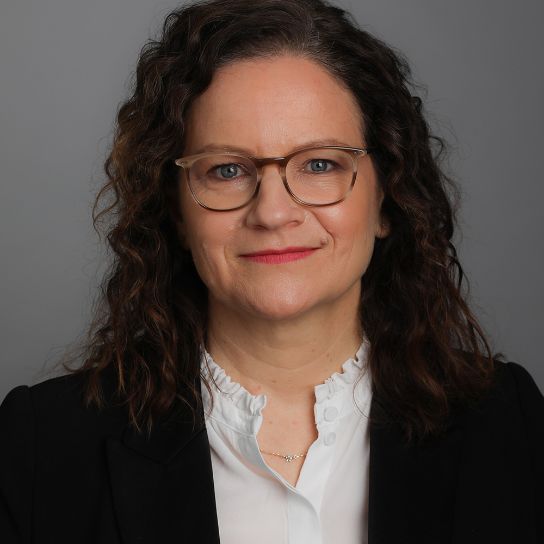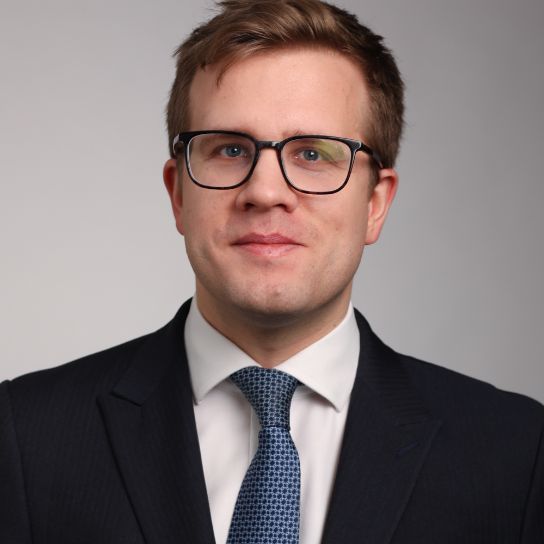On 28 May 2020 the General Court handed down its ruling in CK Telecoms UK Investment Ltd v European Commission (Case T-399/16) in which it annulled the EU Commission’s decision which prohibited the proposed acquisition by CK Hutchison Holdings Ltd (Hutchison) of Telefónica Europe plc (O2). The proposed transaction would have brought together two of the UK’s four mobile network operators (MNOs), Three and O2.
The judgment is a landmark ruling for EU merger control with a wider significance beyond the telecommunications sector. It provides helpful guidance on the application of the significant impediment to effective competition (SIEC) test of the EU merger regulation (EUMR) and, in particular, its application to so-called “gap cases”, i.e. mergers in oligopolistic markets where the merger does not result in the creation or strengthening of a dominant position.
The ruling is a setback for the Commission’s policy on merger control, which has in recent years taken a harder line under Competition Commissioner Vestager. The General Court upheld Hutchison’s complaints on each of the three theories of harm deployed by the Commission. In doing so, the General Court has significantly raised the bar for the Commission both in terms of the substantive threshold and the evidentiary basis it needs to meet before it is able to prohibit a merger.
Key implications of the judgment
- This is the first ruling from the European Courts on the SIEC test introduced in 2004 in order to address the issue of mergers in oligopolistic markets and therefore contains some important guidance on this key concept.
- The Court accepts that the test allows the Commission to prohibit certain transactions in oligopolistic markets which do not give rise to the creation or strengthening of a dominant position, provided they can be expected to affect the competitive conditions on the market to an equivalent extent, by allowing the merged entity to determine the parameters of competition and become a price maker rather than remaining a price taker.
- The Court makes it clear that the Commission needs to demonstrate the existence of an SIEC with a “strong probability” and the burden of proof on the Commission is somewhere between the balance of probabilities and beyond all reasonable doubt.
- The Court is critical of the Commission’s approach to the concept of ‘an important competitive force’ (ICF) in the context of non-coordinated effects, in considering that this does not require an undertaking to stand out from its competitors in terms of impact on competition. Such approach would allow the Commission to treat as an ICF any undertaking in an oligopolistic market exerting competitive pressure.
- The ruling casts doubt on a number of aspects of the Commission’s analysis which it has relied on in a number of other cases, and will be encouraging for other pending appeals challenging the Commission’s application of the SIEC test (eg ThyssenKrupp/Tata)
- It will therefore be seen as a greater opportunity for consolidation in certain sectors, as long as the General Court’s approach will be upheld by the CJEU. The Commission has so far not made it clear whether or not it will appeal the ruling, but in light of its wider implications for the Commission’s merger control policy it is widely anticipated that it will do so.
The Court's Analysis of the Legal Framework Under the EUMR
Review of the Commission's Three Theories of Harm
Background to the Appeal
The proposed merger between Three and O2 was a highly politicised transaction at the time. Under Competition Commissioner Almunia the Commission had cleared, with commitments, a number of “four to three” MNO mergers in Austria, Germany and Ireland. However, under Commissioner Vestager similar mergers began to face greater scrutiny than before. Shortly before the prohibition decision in Three/O2, Telenor and TeliaSonera had abandoned a proposed four to three MNO merger in Denmark due to Commission opposition.
A number of commentators considered that the Commission would no longer permit four to three MNO mergers, as a matter of policy, absent commitments leading to the creation of a new fourth MNO, which occurred in the later Hutchison 3G Italy/Wind/JV decision. The Commission, however, maintained that there was no such “magic number” of MNOs in a national market and that each case is decided on its own facts. More recently, the Commission even approved a four to three MNO merger in the Netherlands (Tele2 NL/T-Mobile NL).
In addition, despite not having jurisdiction to review the transaction, both the Competition and Markets Authority (CMA) and Ofcom, publicly opposed the Three/O2 deal, calling on the Commission to prohibit the transaction.
The Court's Anaylsis of the Legal Framework Under the EUMR
First, as regards the standard of judicial scrutiny, the General Court stated that its review extends to all elements of Commission decisions and that it was appropriate to conduct an in-depth “thorough examination” of the legal and factual questions under appeal. In addition, as established by previous case law (in the Tetra Laval judgment), the role of the EU courts is to establish whether the evidence relied on by the Commission is “factually accurate, reliable and consistent” and whether “the evidence contains all the information which must be taken into account in order to assess a complex situation and whether it is capable of supporting the conclusions” that the Commission wishes to draw.
Second, the General Court analysed the scope of the SIEC test in Article 2(3) EUMR, which provides that a “concentration which would significantly impede effective competition, in the common market or in a substantial part of it, in particular as a result of the creation or strengthening of a dominant position” can be prohibited by the Commission.
The current test is broader than the substantive test under the original version of the EUMR and the Court agreed that it enables the Commission to catch mergers in oligopolistic markets if they give rise to an SIEC, even if they do not result in the creation or strengthening of a dominant position. Notwithstanding, the General Court considered that the SIEC test in the current EUMR was intended to “maintain and even strengthen the concept of a dominant position” in EU competition law and increase legal certainty. Therefore, the General Court held that Article 2(3) EUMR “must be interpreted as allowing the Commission to prohibit, in certain circumstances, on oligopolistic markets concentrations which, although not giving rise to the creation or strengthening of… [a] dominant position, are liable to affect the competitive conditions on the market to an extent equivalent to that attributed to such positions, by conferring on the merged entity the power to enable it to determine, by itself, the parameters of competition and, in particular, to become a price maker instead of remaining a price taker” (emphasis added).
In relation to non-coordinated effects (i.e. unilateral anticompetitive effects arising from a merger), the General Court held that Article 2(3) EUMR must be interpreted in light of recital 25 EUMR, which sets out two cumulative tests, namely that the concentration must involve (i) the elimination of important competitive constraints that the merging parties exerted on each other; and (ii) a reduction of competitive pressure on the remaining competitors. Further, the “mere effect” of reducing competitive pressure on the remaining competitors is not, in principle, sufficient to demonstrate an SIEC.
Third, in assessing the standard the Commission needs to meet, the General Court found that the more complex or uncertain the Commission’s theory of harm is, the more demanding the EU courts must be in reviewing such decisions. Further, the onus is on the Commission to demonstrate that an SIEC was a “direct and immediate effect of the concentration”. As regards the burden of proof, the Commission needs to demonstrate with a “strong probability the existence of significant impediments” following the merger. The General Court considers, therefore, that the burden of proof on the Commission is somewhere between the balance of probabilities and beyond all reasonable doubt.
Review of the Commission's Three Theories of Harm
The General Court considered a number of arguments from Hutchison relating to the Commission’s three theories of harm in this case, namely:
- alleged non-coordinated effects on the retail market for mobile communications services;
- alleged non-coordinated effects from a disruption of the network-sharing arrangements in the UK; and
- alleged non-coordinated effects on the wholesale market for mobile communications services.
1. Non-coordinated effects on the retail market
The Commission alleged that the Three/O2 transaction would have resulted in significantly weakened competition on the retail market for mobile communications services. Hutchison appealed the Commission’s findings on a number of grounds, including the Commission’s classification of Three as an important competitive force, the assessment of closeness of competition between Three and O2, and the quantitative pricing analysis on the effects of the transaction.
Three as an important competitive force
The General Court upheld Hutchison’s complaint that the Commission had distorted the concept of an important competitive force. The Commission‘s view was that, to be an important competitive force (“ICF”), an undertaking did not need to particularly stand out from other competitors in terms of impact on competition, but later conceded what was needed was for that competitor to have an impact on competition greater than its market share would suggest. The General Court held that this was not sufficient in itself to prove an SIEC and if the Commission’s position were correct, it would allow it to treat as an ICF any undertaking in an oligopolistic market exerting competitive pressure.
The General Court also cast doubt on whether the concept of an “important competitive force” could be regarded as an “autonomous legal criterion” and considered that the Commission had confused this concept with the legal framework set out in Article 2(3) and recital 25 EUMR. By doing so, the Commission had considerably broadened the scope of the SIEC test “since any elimination of an important competitive force, would amount to the elimination of an important competitive constraint which, in turn, would justify a finding of a significant impediment to effective competition”.
Closeness of competition
Further supporting its theory of harm of non-coordinated effects in the retail market, the Commission concluded that Three and O2 were close competitors. The Court broadly supported the use of a “closeness of competition” analysis in merger reviews, but it did not consider that the Commission had demonstrated how closely Three and O2 were competing, or that it had shown that they exerted important competitive constraints on each other. Overall, the General Court found that Three and O2 were not particularly close competitors, even if all MNOs were by definition close to a greater or lesser extent.
While the Commission had established that Three and O2 were “relatively close” competitors in some segments of the markets, “that factor alone is not sufficient to prove, in the present case, the elimination of important competitive constraints which the parties to the concentration exerted upon each other and cannot suffice to establish a significant impediment to effective competition”. The Court was quite clear that to hold otherwise would mean that any concentration resulting in a reduction from four to three operators would as a matter of principle be prohibited, i.e. emphatically rejecting there being a “magic number” of MNOs in a market.
Quantitative analysis
The General Court was also very critical of the Commission’s quantum analysis of upward pricing pressure in this case (the “UPP analysis”). The Court noted that the Commission’s UPP analysis relied on only a limited number of key inputs, i.e. diversion ratios and margins. As a result, the UPP analysis was not sufficient to show an elimination of important competitive constraints that the parties had exerted upon each other would result in a significant increase in prices and, therefore, in an SIEC. Overall, the General Court found the Commission’s quantitative analysis lacked probative value and upheld Hutchison’s challenges of this analysis.
Interestingly, the General Court considered that the Commission should have included transaction efficiencies as a component in its UPP analysis. This observation is significant as it potentially opens the door to a greater consideration of efficiencies as part of merger reviews which, to date, has been very limited due to the very high threshold in the Commission’s horizontal merger guidelines.
2. Non-coordinated effects from network-sharing
In the UK, the four MNOs between them are party to two network-sharing arrangements. Three and EE are party to the MBNL network-sharing arrangement, whereas O2 and Vodafone are parties to the Beacon network-sharing arrangement. These arrangements enable the parties to share, to different extents, the network infrastructure needed to provide mobile communications services. The Commission considered that the Three/O2 transaction would disrupt the competitive dynamic between the two network-sharing arrangements as the merged entity would be a party to both MBNL and Beacon.
The General Court agreed with the Commission that “reduced competition from one mobile network operator, which is linked to the parties to the concentration through network-sharing arrangements, could, in certain cases, lead to a significant impediment to effective competition”. The Court went on to say that the fact that network-sharing arrangements may be pro-competitive, did not mean that termination, renegotiating or each subsequent alteration following a merger could necessarily be characterised as an SIEC. This would depend on the possible pro-competitive or anticompetitive effects of the new situation, which the Commission or national competition authorities could assess. Therefore, the General Court found that a possible misalignment of interests, a disruption of the pre-existing arrangements, or even termination of those agreements, did not of itself constitute an SIEC.
The General Court also considered the effects of Hutchison’s proposed network consolidation on EE and Vodafone. In this regard, the Court highlighted numerous fundamental deficiencies with the Commission’s analysis. Further, the General Court stated that “the assessment of a possible elimination of important competitive constraints that the merging parties had exerted upon each other and a possible reduction of competitive pressure on the remaining competitors lies at the heart of the assessment of the non-coordinated effects arising from the concentration”. Therefore, it is clear that the General Court considered that the key consideration was the removal of competitive constraints that the parties had exerted on one another rather than harm to competitors. In essence, the Court found that “EU competition rules are primarily intended to protect the competitive process as such, and not competitors”.
The General Court then went on to assess the Commission’s argument that the proposed transaction could have led to a reduction on each MNO’s incentives to proactively invest and improve its network, reducing competitive pressure. The Commission maintained that this could have arisen as a result of Three having visibility of the development of both network-sharing arrangements.
However, the General Court criticised the timeframe of the Commission’s assessment on this point, finding that in this sector a dynamic prospective analysis is necessary, over a relatively long period of time in the future. In particular, the Court considered that the Commission established that, in the long term, the merged entity would not maintain two separate networks. However, this timeframe was not then adopted by the European Commission when assessing the competitive effects of the transaction. The General Court therefore rejected the Commission’s analysis based on increased transparency insofar as it was based on the assumption of two network-sharing arrangements.
The General Court therefore upheld Hutchison’s appeal of the theory of harm relating to network sharing.
3. Non-coordinated effects on the wholesale market
Finally, the Commission’s third theory of harm was that the merger would have given rise to non-coordinated effects on the market for wholesale access to mobile communications services. MNOs, which own and operate the network infrastructure necessary to provide mobile communications services, provide access services at a wholesale level to non-MNOs, such as mobile virtual network operators (MVNOs). Those non-MNOs can then offer retail mobile communication services to their subscribers.
Disagreeing with the Commission’s analysis, the General Court held that the reduction from four to three operators on a wholesale market is not, in itself, capable of establishing a significant impediment to competition on the wholesale market.
The Court noted it was undisputed that Three’s market share for the provision of wholesale access prior to the transaction was very small, i.e. between 0-5%. The General Court considered this tended to suggest the absence of any SIEC where others in the market have larger market shares. The combined market share of the parties (i.e. 30-40%) was also not indicative of the creation or strengthening of a dominant position or even an SIEC.
The General Court stated that the Commission had also relied on Three’s gross add shares (i.e. Three’s share of new subscribers) to support its theory of harm. However, the Commission did not explain properly why gross add shares were of decisive importance. The General Court held that the fact that Three’s gross add share was higher than its market share was not, in this case, sufficient to establish an SIEC and could not of itself classify Three as an ICF.
In addition, as regards the Commission’s qualitative analysis, the General Court agreed with Hutchison that the Commission had not established that Three was an ICF, applying the criteria “which it had imposed on itself” in its guidelines. Even if the Commission’s analysis had shown this, the General Court noted that such analysis would not be sufficient to show that Three and O2 exerted on each other important competitive constraints which would be eliminated following the merger.
The General Court therefore upheld Hutchison’s complaint as regards the third theory of harm.
Veronica Roberts and Christon Shenolikar were part of a team advising O2 and its parent company Telefónica SA on this transaction. The views expressed in this e-bulletin do not necessarily reflect the views of O2 or Telefónica.
Key contacts

Veronica Roberts
Partner, UK Regional Head of Practice, Competition, Regulation and Trade, London

Kyriakos Fountoukakos
Managing Partner, Competition Regulation and Trade, Brussels
Legal Notice
The contents of this publication are for reference purposes only and may not be current as at the date of accessing this publication. They do not constitute legal advice and should not be relied upon as such. Specific legal advice about your specific circumstances should always be sought separately before taking any action based on this publication.
© Herbert Smith Freehills 2024


